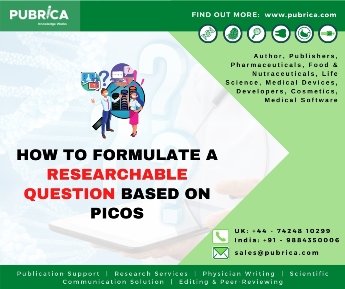
How to Formulate a Researchable Question based on PICOS
July 26, 2021
How to search keywords in Google scholar for your Research
August 2, 2021In brief
The Title Screening and Evaluation in Systematic Review’s objectives were to gather preliminary data on the quality of medical researcher’s title screening andthe impact of screening modality on screening accuracy and performance. The second phase in research detection, full-text article screening, was left out because the characteristics of this task vary significantly from citation screening (1).
Introduction
The title must be clear, explicit and reflect the core elements of the question. It should be as detailed and informative as possible, representing the nature and style of systematic analysis that will be conducted. The title would not be phrased as a challenge or a conclusion, and the title, analysis objectives/questions, and inclusion requirements should all be consistent. In an analysis protocol, the title should contain the phrases “A formal review protocol” and “A systematic re-evaluation protocol.”
While various mnemonics have been identified for various forms of analysis (and research) issues, if the review, for example, seeks to investigate the aetiology of illness or the likelihood of a health consequence, this should be mentioned explicitly as possible in the document’s title. If separate exposures and patient effects are being investigated, they should be included in the title (2).
“Long-term topical corticosteroid use and skin cancer risk: a comprehensive evaluation protocol,” for example. This example identifies the population, the exposure (corticosteroid use), and the result (incidence of skin cancer) of concern and the fact that the study is a standardized review procedure.
Title screening process
Multiple reviewers (you and your superiors or co-reviewers) will decide the papers to include and remove based on the parameters defined in your procedure when checking the final search results from your preferred databases (and other sources, if relevant). The first stage is typically focused on titles and abstracts, followed by complete text analysis and data extraction.
- Pre-screening: Before the beginning screening, keep track of the number of findings from each database or source.
- Title and abstract screening: Each reviewer will check titles and abstracts to see whether they meet the requirements or add meaning to the systematic review analysis. Each critic does this independently to ensure there is no bias. After that, the results are compared.
- Full-text screening: To fine-tune the final list of papers that would apply to analysis, several reviewers independently look at the full-text of included posts (3).
Title screening overview
You must screen the results after you have run your search on the databases mentioned in your protocol. Screening is a two-step procedure that determines whether each article satisfies the inclusion requirements and, as a result, should be included in your analysis.
To reduce bias, you must have a minimum of two reviewers to screen (yourself and someone else from your team).
How do I screen?
Save the final version of your search technique in each database that you defined in your protocol after you’ve done building it. Once you’ve got them all set up, run each one and export all of your results to EndNote, keeping each database’s results in its community. Keep your EndNote Library secure and backed up since you’ll use it for full text and your PRISMA flowchart (reporting).
From EndNote, export your references. Then import to Covidence to commence screening.
Endnote overview:
We suggest exporting the database search results into EndNote to prepare for screening. EndNote Desktop is recommended over EndNote Web for compatibility and ease of use. Start by familiarising yourself with EndNote in general if you’re new to the software. The Library provides a variety of services to assist you.
A step by step guide for getting started with EndNote.
- EndNote Essentials workshops
Register for upcoming face-to-face or online workshops to learn EndNote.
Install EndNote on your computer (Windows or Mac OS)(4)
Covidence overview:
It is a web-based software that assists researchers to screen references and undertake data extraction.
Conclusion:
The viability of including medical researchers in screening titles for systematic reviews was shown in the Title screening and assessment of the systemic analysis. ReGroup, a web-based systematic analysis tool increased screening decisions’ sensitivity, but the four modalities tested were otherwise identical. The researcher’s screening success was moderate and highly variable, and diverse reward systems, preparation and support, and alternate methodological methods could help.We propose that non-expert groups and emerging tools for title screening be investigated further to increase the quality of systemic review processing(5).
References:
- Dressler, J., et al. “Factors affecting patient adherence to publicly funded colorectal cancer screening programmes: A systematic review.” Public Health 190 (2021): 67-74.
- Hamel, Candyce, et al. “Few evaluative studies exist examining rapid review methodology across stages of conduct: a systematic scoping review.” Journal of Clinical Epidemiology (2020).
- Gates, Allison, et al. “The semi-automation of title and abstract screening: a retrospective exploration of ways to leverage Abstrackr’s relevance predictions in systematic and rapid reviews.” BMC medical research methodology 20 (2020): 1-9.
- Hamel, C., et al. “An evaluation of DistillerSR’s machine learning-based prioritization tool for title/abstract screening–impact on reviewer-relevant outcomes.” BMC medical research methodology 20.1 (2020): 1-14.
- Gates, Allison, et al. “Decoding semi-automated title-abstract screening: a retrospective exploration of the review, study, and publication characteristics associated with accurate relevance predictions.” (2020).
